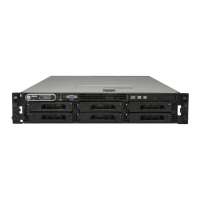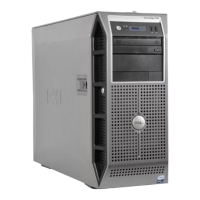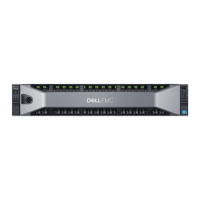12 Dell PowerEdge 6100/200 System User’s Guide
system memory
System memory is a synonym for RAM.
system setup program
System setup program options allow you to configure your
computer’s hardware. Some options in the system setup
program require that you reboot the computer in order to
make a hardware-configuration change. Because the sys-
tem setup program is stored in NVRAM, any options that
you set remain in effect until you change them again.
system.ini
file
When you start Windows, it consults the system.ini file to
determine a variety of options for the Windows operating
environment. Among other things, the system.ini file
records which video, mouse, and keyboard drivers are in-
stalled for Windows.
Running the Control Panel or Windows Setup program
may change options in the system.ini file. On other occa-
sions, you may need to change or add options to the
system.ini file manually with a text editor, such as Notepad.
terminator
Some devices, especially disk drives, contain a terminator
to absorb and dissipate excess current. When more than
one such device is connected in a series, you may need to
remove the terminator—or change a jumper setting to dis-
able it—unless it is the last device in the series. However,
some devices have terminators that should never be re-
moved or disabled.
text editor
An application program for editing text files consisting
exclusively of ASCII characters. MS-DOS Editor and
Notepad (in Windows) are text editors, for example. Most
word processors use proprietary file formats containing
binary characters, although some can read and write text
files.
text mode
See video mode.
TFT
Abbreviation for thin film transistor. A flat-panel display
for notebook computers where each pixel is controlled by
one to four transistors.
tpi
Abbreviation for tracks per inch.
TSR
Abbreviation for terminate-and-stay-resident. A TSR pro-
gram runs “in the background.” Most TSR programs
implement a predefined key combination (sometimes re-
ferred to as a “hot key”) that allows you to activate the TSR
program’s interface while running another MS-DOS pro-
gram. When you finish using the TSR program, you can
return to the other application program and leave the TSR
program resident in memory for later use.
Because MS-DOS is not designed to support multiple
programs running simultaneously, TSR programs can
sometimes cause memory conflicts. When troubleshoot-
ing, rule out the possibility of such a conflict by rebooting
your computer without starting any TSR programs.
TV
Abbreviation for television.
UL
Abbreviation for Underwriters Laboratories.
UMB
Abbreviation for upper memory blocks. See also conven-
tional memory, HMA, memory manager, and upper
memory area.
upper memory area
The 384 KB of RAM located between 640 KB and 1 MB.
If the computer has an Intel386 or higher microprocessor,
a software utility called a memory manager can create
UMBs in the upper memory area, in which you can load
device drivers and memory-resident programs. See also
conventional memory, HMA, and memory manager.
UPS
Abbreviation for uninterruptible power supply. A battery-
powered unit that automatically supplies power to your
computer in the event of an electrical failure.
USOC
Abbreviation for Universal Service Ordering Code.
USWC
Acronym for Uncacheable Speculative Write Combined.
utility
A program used to manage system resources— memory,
disk drives, or printers, for example. The diskcopy com-
mand for duplicating diskettes and the himem.sys device

